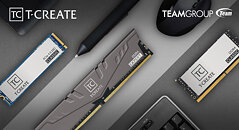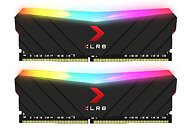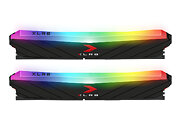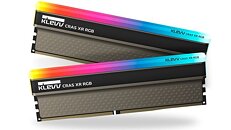
Intel Core i5-13600K and Core i7-13700K QS CPUs Benchmarked
Is there anything better than yet another benchmark leak of upcoming products? This time around we don't have to make do with Geekbench or some other useless benchmark, as a bilibili user in the PRC has posted a video where he has put the upcoming Intel Core i5-13600K and Core i7-13700K CPUs through 10 different games, plus 3DMark Fire Strike and Time Spy. This has been done at 1080p, 1440p and 2160p at that, using a GeForce RTX 3090 Ti graphics card. Both CPUs are QS or Qualification Samples, which means they're going to be close to identical to retail chips, unless there are some last minute issues that are discovered. The CPUs were tested using an ASRock Z690 Steel Legends WiFi 6E motherboard, well, two actually, as both a DDR4 and a DDR5 version were used. The DDR4 RAM was running at 3600 MHz with slow-ish timings of 18-22-22 in gear 1, whereas the DDR5 memory was running at 5200 MHz, most likely at 40-40-40 timings, although the modules were rated for 6400 MHz, in both cases we're looking at 32 GB.
Courtesy of @harukaze5719, we have some much easier to read graphs than those provided by the person that tested the two CPUs, but we've included the full graphs below as well. Each CPU was compared to its current SKU equivalent from Intel and in many of the games tested, the gain was a mere percent or less to three or four percent. However, in some games—at specific resolutions—especially when paired with DDR5 memory, the performance gain was as much as 15-20 percent. A few of the games tested, such as FarCry 6 at 4K, the game ends up being GPU limited, so a faster CPU doesn't help here as you'll see in the graphs below. There are some odd results as well, where the DDR5 equipped systems saw a regression in performance, so it's hard to draw any final conclusions from this test. That said, both CPUs should offer a decent performance gain, as long as the game in question isn't GPU limited, of around five percent at 1440p when paired with DDR5 memory.
Courtesy of @harukaze5719, we have some much easier to read graphs than those provided by the person that tested the two CPUs, but we've included the full graphs below as well. Each CPU was compared to its current SKU equivalent from Intel and in many of the games tested, the gain was a mere percent or less to three or four percent. However, in some games—at specific resolutions—especially when paired with DDR5 memory, the performance gain was as much as 15-20 percent. A few of the games tested, such as FarCry 6 at 4K, the game ends up being GPU limited, so a faster CPU doesn't help here as you'll see in the graphs below. There are some odd results as well, where the DDR5 equipped systems saw a regression in performance, so it's hard to draw any final conclusions from this test. That said, both CPUs should offer a decent performance gain, as long as the game in question isn't GPU limited, of around five percent at 1440p when paired with DDR5 memory.

















